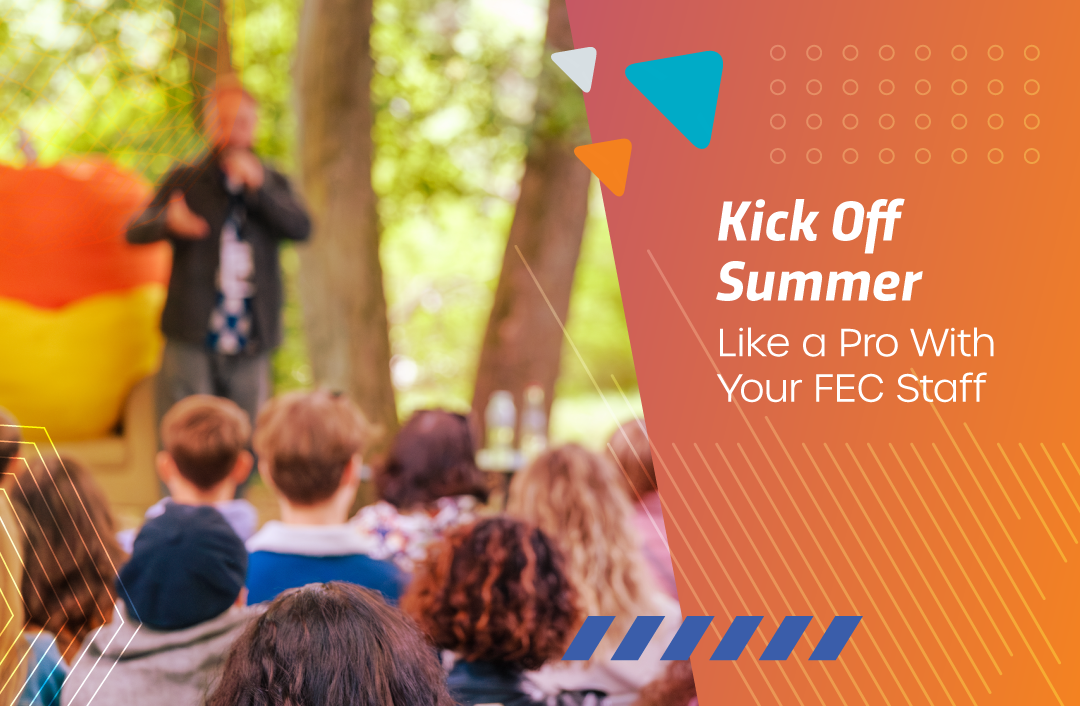Guest experience may be changing, but one fact remains – use data to inform your strategy.
As you continue to adapt to the challenges each new day brings, it also makes sense to take a broader look at industry trends and consider whether your plan will put your business ahead of, or behind, the competition.
We were asked not long ago to provide our analysis of the 2020 FunRating Report, provided by Amusement Advantage, to help facilities make sense of survey results from over 600 attractions across the family entertainment and amusement industry. Our full five-part analysis was published inside the report, but here we wanted to share three of the key takeaways that can help you continue to think creatively about your operation now, and in the future.
No. 1: What can guest satisfaction results tell us about food service trends?
[With the survey results from over 600 attractions across the amusement industry, we can see that consumers believe] nearly every facility type could improve in the area of food service. One major reason amusement facilities are lagging in this area could be because it’s not a major focus for the business. Buildouts, theming, attraction mixes, maintenance schedules, safety planning, and so much more fill up an operator’s mind that sometimes planning for food service doesn’t get the time and planning that it needs. Added to that, the restaurant industry is constantly evolving and developing, so it’s easy to fall behind. To combat that, it’s a good idea to take more cues from the restaurant industry.
Notice that museums/science centers scored a bit higher than other attraction types. That could be because many of those venues offer a unique food and beverage operation that appeals to their demographic. Consider your current food concept: When was the last time you updated? Does is still fit your brand? Is this what you want your facility to be known for? For facilities who partner with outside vendors, remember that once the food is on your business’ menu, it’s representing you.
Obviously, pizza, chicken tenders, burgers and fries are staples for most amusement facilities, and that’s unlikely to change. But it’s important to understand that your audience craves new food experiences. Many restaurants refresh their menu at least twice a year, some every season. Why? Because seasonal offerings can save in food cost, boost excitement and increase revenue. Your food purveyors or food and beverage consultants can help you develop or refine your menu concept and offerings.
July 2020 additional insights: Many facilities have reopened with a limited menu. Now is the time to scrutinize what guests are asking that’s not on your menu? What are the options that they don’t seem to miss? It might make sense to streamline your offerings so that you’re running an efficient and profitable food service operation before you consider growing it. One way to keep a small menu fresh is to offer one seasonal special per month or quarter that guests can’t get other times in the year.
No. 2: What lessons in “return likelihood” can be learned from top scoring facility types?
It’s interesting that the attraction types that scored the highest in return likelihood were aquariums, museums and science centers, and zoos or other wildlife parks. One reason, as notated in the FunRating report is that elevated conditions correlate to high likelihood to return. It’s also worth mentioning that these types of facilities also rate higher in service than most other attractions. If you consider what those three facilities types have in common a few things stand out.
As mentioned in FunRating, there is a “distinct correlation between perception of service with non-profit and for-profit attractions. This could, of course, mean that consumers feel better about nonprofit organizations than they do about for-profit organizations. But, to me, it seems likely that these guests are interacting with staff who feel good about where they work, and the result is a more engaging experience. Many are staffed by some or all volunteer teams who literally choose to work there, and believe in the mission of their organization. Because of that, they’re almost assuredly providing a different experience. Many studies in behavioral science suggest that when people feel like they’re part of something bigger than themselves, they give more of themselves to their role.
Every facility type can tap into this power by helping connect team members to the power of purpose – and discussing and celebrating the very real difference they’re making with guests every day. This can be done by hosting charity and community events, highlighting special guest interactions and simply just by sharing the impact that’s possible when people come together for a common goal (making memories). Not only does this help your team want to work for you, but the more your guests see you living generously, the more they’ll connect to your purpose as well – a win for everyone.
Aquariums are showing as the leaders in service. In addition to staffing with people with shared values, the aquariums I’ve worked with take great care to develop interactive programming for guests to enjoy. And each of those programs is staffed by well-trained, knowledgeable team members who can enrich the experience of patrons. There is so much power in this level of focus that any attraction can leverage. Educational events with guest speakers, special events with local experts, and a highly trained staff with something unique to offer about your facility, local area, or menu offering, all enrich your attraction’s appeal.
July 2020 additional insights: There are two common types of guests that are emerging during this time – those who are more willing (for now) to forgive guest experience friction points as a result of the pandemic, and those who are scrutinizing every asect of the way your business is handling its response. This suggests that it’s more important than ever to demonstrate what matters to the heart of your business. The businesses that can forge the strongest bonds will be able to weather the current and future storms – with the help of their community.
No. 3: What can we learn from the “most improved”?
Bowling centers have noted the biggest increases in scores over the last five years, and that should come as no surprise. The family entertainment industry has been evolving and bowling has been a big part of that evolution for some time now. This doesn’t mean they’ve all done major renovations or expansions, but what they have continued to do is change how they think about their businesses, renew their passion for the industry, and make careful changes to meet their consumers’ needs.
The lesson here is to get and stay connected with your community, strive to improve in any areas you feel would serve your guests better, such as in your space, offerings, food service, or marketing. Take note of what works, what doesn’t, and be open to the possibilities that change can bring. Honestly, if you did that, how could you lose?
To get your own copy of the FunRating Report for the rest of our analysis and those of other panel experts, visit http://www.amusementadvantage.com/funrating/ or email josh@amusementadvantage.com.
Have other insights you’re using to inform your strategy? Share them with us in the comments or on Twitter.
Search Resources
Subscribe to Email Updates
Featured Resources
Blogs //
5 Event Types that Can Win Big For Your FEC

News //
CenterEdge Welcomes John Keys as Sales Director

Blogs //
How to Protect Your FEC’s Brand

Blogs //
Kick Off Summer Like a Pro With Your FEC Staff

Posts by Topic
- Advantage Payments (7)
- Brand Management (19)
- Business Growth (81)
- Capacity Management (2)
- CenterEdge News (28)
- Client Interviews (8)
- Credit Card Processing (3)
- Data & Reporting (12)
- Digital Signage (1)
- Event Management (20)
- Facility Management (10)
- Food & Beverage (8)
- Guest Experience (34)
- Guest Management (20)
- Holiday Season & Promotions (5)
- Industry Events (10)
- Inventory Management (1)
- Loyalty Programs (8)
- Marketing Tips (24)
- Operations (1)
- Point of Sale (10)
- Product Launch (11)
- Productivity (5)
- Profitability (35)
- Redemption Management (1)
- Sales (35)
- Season Passes (1)
- Team Training (60)
- Waivers (2)

Leave a Comment